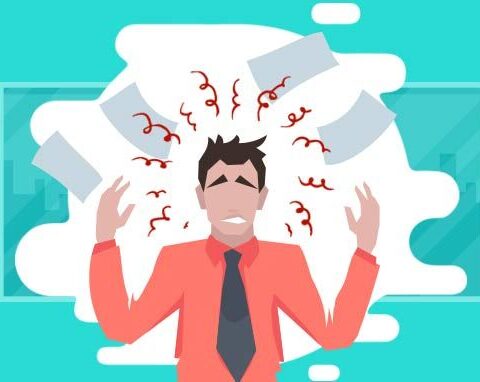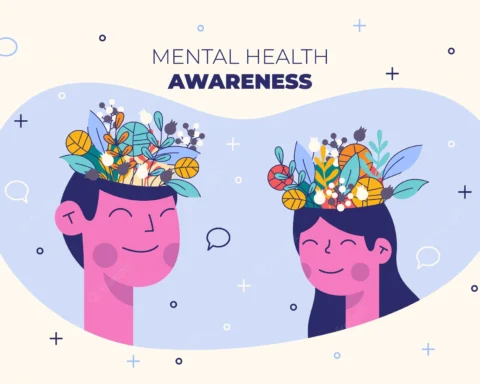Mental strength and mental health are sometimes used interchangeably but they’re not the same thing. Many dictionaries define mental health as being “the absence of mental illness.” But not having depression, anxiety, or another illness doesn’t mean you’re mentally strong.
In fact, you might still be mentally strong even if you’re dealing with a mental health issue. Mental strength involves your ability to think, feel, and perform at your best.
Mental Strength vs. Mental Health
The difference between mental strength and mental health becomes easier to understand when you compare it to the difference between physical health and physical strength. Building bigger muscles can improve your physical health. However, big muscles don’t guarantee you won’t ever deal with a physical health problem, like high cholesterol.
And while a health issue might make it a little more difficult to go to the gym and workout, you can still make choices that help you grow physically stronger even when you have a physical health problem.
The exercises that build mental strength will also improve your mental health. And better mental health makes it easier to grow mentally strong.
Mental Strength
- The ability to cope with negative emotions in a healthy way.
- Understanding your emotions.
- Knowing when to engage with your emotions and when to take a step back.
Mental Health
- The presence or absence of a mental health issue.
- The overall state of your mental wellness.
Three Parts to Mental Strength
Mental strength has three parts:
- Thinking: It involves the ability to think realistically. That means knowing how to recognize irrational thoughts and replace them with a more realistic inner dialogue. It’s also about speaking to yourself with kindness. So when you’re tempted to be overly critical of yourself, mental strength allows you to respond with self-compassion.
- Feeling: Mental strength doesn’t involve suppressing your emotions or denying your pain. Instead, it’s about acknowledging how you feel. Sometimes, that means accepting an uncomfortable emotion or even calming yourself down before having a tough conversation.
- Doing: Mental strength is about taking productive action. Whether that means working out even when you’re tired or it means allowing yourself to engage in self-care, it involves ensuring that your behaviors are good for you.
How to Build Mental Strength
Fortunately, everyone has the ability to build mental strength. Developing bigger mental muscles takes exercise—just like developing bigger physical muscles. Building mental strength may, in turn, also improve your mental health.
While there are many exercises that can help you build mental strength, here are a few simple ones that can get you started.
Cognitive Exercises
Cognitive exercises are those strategies that help you think differently. This could include any exercise that helps you think more positively, reframe negative thoughts, or develop a more realistic mindset. Here are some examples of healthy cognitive exercises:
- Write in a gratitude journal: Gratitude journals are an excellent way to activate and strengthen positive thoughts and feelings.
- Talk to yourself like a trusted friend: People are often harder on themselves than they are on their friends. So, try to show yourself the same compassion you would extend to a loved one.
- Argue the opposite: In the moments you’re convinced everything will go wrong, think of everything that could go right.
Emotional Exercises
Emotional exercises increase your self-awareness about your emotional state. They may help you recognize when your emotions are helpful or not helpful, they may assist you in identifying strategies that reduce the intensity of your feelings, or they may help you embrace uncomfortable feelings. Here are some examples of emotional exercises:
- Label your feelings: Noticing your feelings as feelings can help you get some distance from them. This can help you think more logically and get a better perspective on the problems or emotions you’re dealing with.
- Use healthy coping skills to deal with uncomfortable emotions: Instead of only focusing on negative emotions, you can take a walk, give yourself a pep talk, or read a book you enjoy. This isn’t an attempt to avoid or ignore your feelings, but it can help to alleviate some of your painful emotions.
- Take deep breaths: Deep breathing exercises can help reduce anxiety and alleviate tension from your body and mind.
Behavioral Exercises
Behavioral exercises are about getting up and doing things that are good for you. These actions help you feel better and perform at your peak. Some examples of behavioral exercises include:
- Perform behavioral experiments: Behavioral experiments help to challenge any thoughts that are unproductive and self-limiting.
- Schedule positive activities: It always helps your mental well-being to make time for things that bring you joy. Schedule a warm bath before bed or carve out some time to cook a nice meal for yourself.
- Engage in hobbies: Hobbies will engage your mind in something that you love to do. Whether it’s taking pictures or baking, hobbies can bring a sense of accomplishment that can help you feel good about yourself.
By: Amy Morin, LCSW








